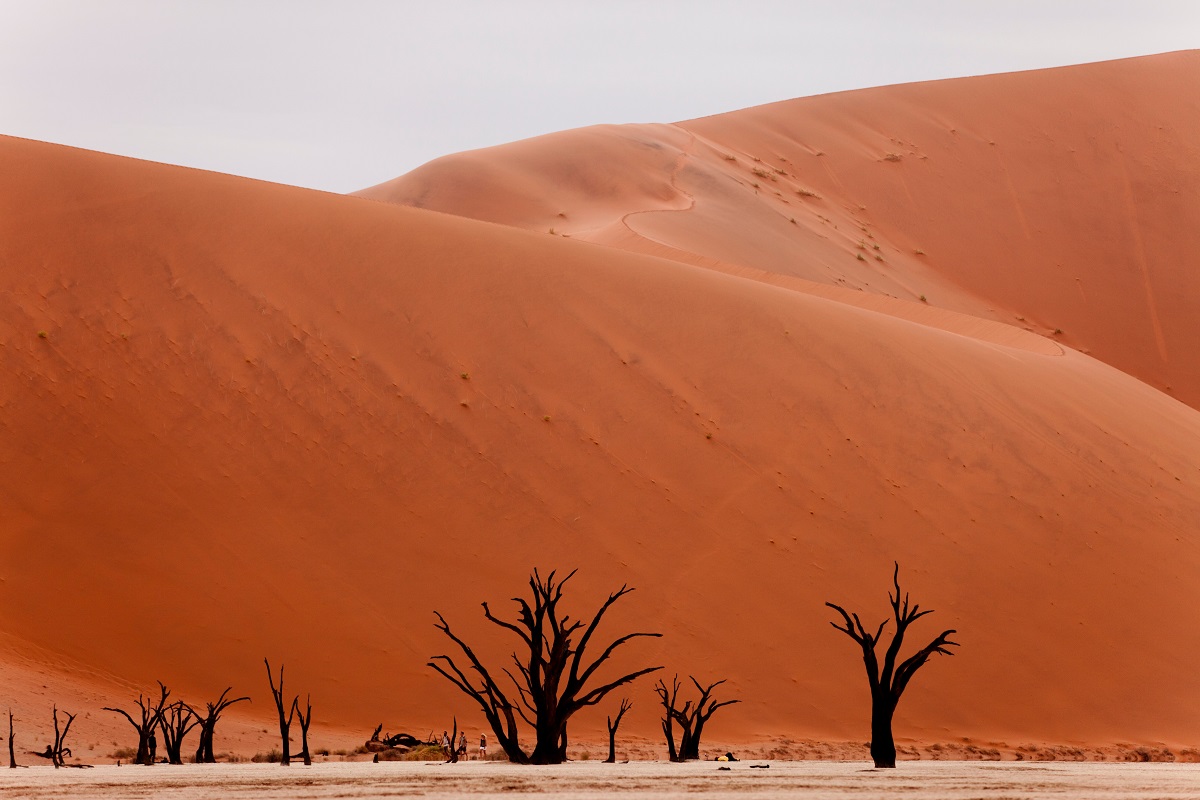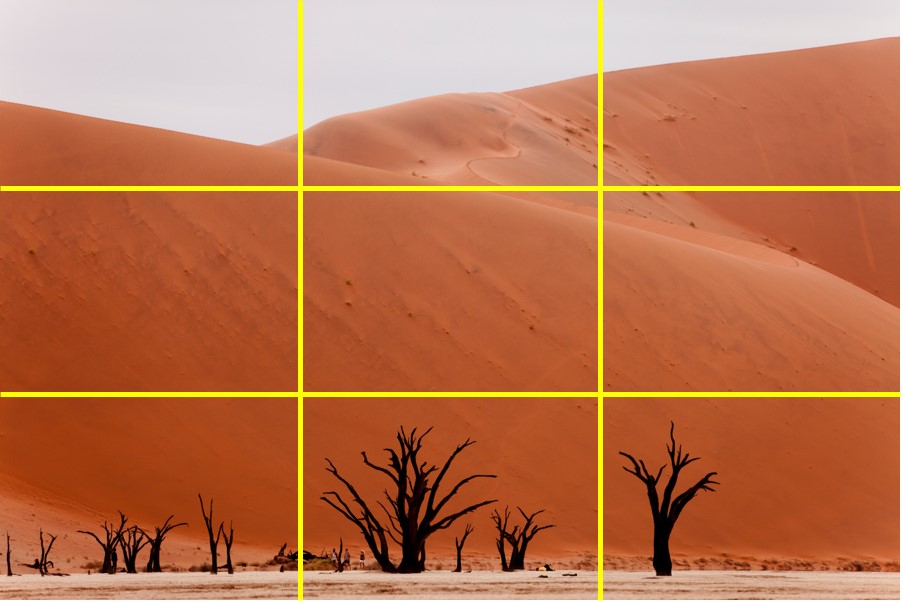
Composition Corner | Sharp Contrasts in Namibia
A look at composition elements on the individual photo level.
Namibia is a landscape photographer’s dream. Sharp contrasts and big scenery create otherworldly images. Nevertheless, the same rules of composition apply, and we’re going to dissect the photo above into its components.
First, we’ll want to capture the fascinating combination of grandeur and mystery that surrounds the great sand dune sea of Namibia. Thus, including the towering dunes in your portfolio of the trip is somewhat of a no brainer. However, without including foreground elements, you stand to lose the sense of scale. In addition, adding in these specific trees (good contrast, evocative, etc.), it helps to inject an even greater sense of mystery into the landscape and resulting image.
Now that you’ve chosen your background and foreground, you’ll want to think about how to arrange everything into a single shot. Going back to composition 101, you’ll want to mentally overlay the “rule of thirds grid” over your scene.

Now you’ll see that this photo is quite balanced, with the dead trees in the bottom third, the dominant “face” of the dune in the middle third, and the dramatic peaks of the dunes in the upper third. This serves to compartmentalize the scene from the viewer’s perspective, adding to its aesthetics.
Initially the placement of foreground elements into the lower third draw the eye down to the mysterious dead trees. But then, by including some interesting background elements with the towering dunes, you help then draw the eye to the rest of the photo allowing for a full appreciation of what you, the photographer, are capturing.
In addition, you’ll notice a small serpentine hiking trail in the upper middle segment of the photo. By shooting with a narrow aperture (large f-stop number) OR, by shooting in landscape mode with a point-and-shoot camera, you are maximizing depth of field. This way, both the foreground trees and the background detail of the ridges and trail are in good focus. Yet another way to evoke the sense of distance, scale, and immensity in an otherwise somewhat uniform landscape.
To summarize, landscape photography lends itself significantly to general rules of composition. While all rules are meant to be broken, it’s often best to begin with the rule of thirds, and only sway from it if you can justify to yourself why you chose to go a different way. To read more on this, check out our composition page for more information.
Go forward and give it a shot,
Court